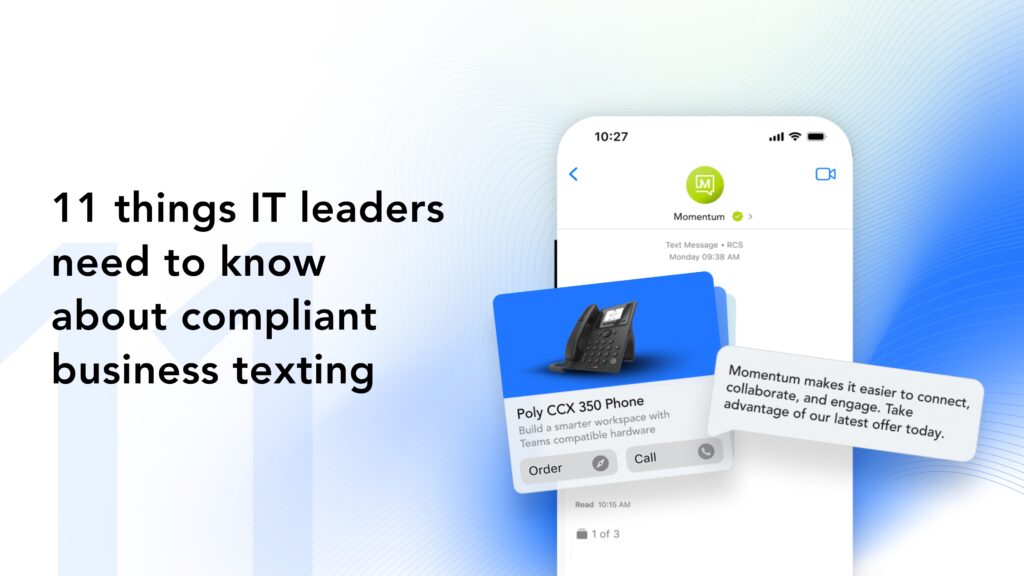The workforce is evolving more rapidly than ever. It experienced a gigantic shift when businesses switched to remote work in 2020, and it’s about to undergo another one. With vaccinations being rolled out and the country opening up again, we’re about to be able to return to a normal workplace.
But is that what workers really want? 40% of employees say they might quit if they can’t continue to work from home. And 67% want to see their colleagues in-person more.
Things are about to change. And the question on all our minds is whether this is going to be another major disruption. Are we even going to lose employees in the process?
The hybrid work model, which combines in-person and remote work, could be the solution to our problem.
66% of businesses are considering redesigning their physical workspaces to suit hybrid work. Because the pandemic awakened them to the power of hybrid work to transform the workplace.
Read on to discover why hybrid work is the best next step for businesses. We will explore its benefits and challenges, what it could look like in the future, and the various models that will allow any business to embrace it.
Hybrid Work Is the Best of Both Worlds
You may feel like you’re stuck between a rock and a hard place. 73% of employees want to keep having flexible remote work options, but 67% crave more face-to-face interaction with their teams.
Hybrid work could be the permanent solution that combines the best of both worlds and surpasses what the traditional and virtual work models could do separately.
And it’s not just a trend that will disappear after a while. Here are just a few ways it could transform the way we work:
- It helps ensure business continuity in the midst of any disruption: Only 12% of companies felt highly prepared for the pandemic, meaning 88% of companies struggled to adapt to it and survive. This awakens us to the fact that we need to be more agile and flexible. A hybrid workforce drives business continuity and resilience. It lets you work anywhere, anytime. This allows business operations to continue with minimal disruptions. When you make the switch to a hybrid model, it also makes it easier to adapt to digital transformations. And it creates an agile culture where you’re more equipped to respond well if a crisis hits.

- It offers employees the most flexibility so they can work the way that best suits them: It gives them a rare opportunity to combine their on- and offsite work according to what they and their employers find best. And anyone can come into the office whenever they need to get documents or have meetings that are better in-person. More flexible options also means more job opportunities for some, such as those who can’t leave their house as often.
- It increases employee productivity: 48% of workers feel more productive working remotely, while 52% felt more productive working onsite. The hybrid model is the one model that lets employees work in whatever setting helps maximize their productivity. For example, those who have a distracting atmosphere at home can work in the office, and those who find they’re more focused at home can work remotely. And employee productivity drives profits. For example, almost three-fifths of business leaders in the UK believe hybrid work is more profitable.
- It raises employee satisfaction: Their increased productivity stems partly from their ability to work from home or in the office at-will. This gives them the freedom to work how and where they want, which motivates and encourages them to work. Employees in a hybrid workplace are more satisfied than those working exclusively at home or onsite. And of course, they would be. It gives them more time to be with their family and lessens their commute time. Employee satisfaction is also very important since 64% of employees are considering leaving their jobs. The flexibility and freedom the hybrid model offers could help decrease turnover rates and prevent the loss of valuable employees.
The Growth and Future of Hybrid Work
Needless to say, we’ve never had to implement remote work as quickly as we did in 2020. And since the technology is fairly new, it naturally came with certain challenges.
For example, employees have become more siloed and are experiencing digital fatigue from spending hours in front of a computer. It’s also harder to develop a company culture or for new hires to be integrated through social experiences.
But the hybrid model shows immense potential for growth. That’s why Google believes its future is in hybrid work and plans to have around 60% of their employees spend some time on- and offsite.
And hybrid work can solve the issues that come with exclusively remote work.
Here’s how hybrid work can grow in the future and make switching to it completely worthwhile in the long-run:
- Employees will have more in-person time together and a better online company culture: Whenever they’re missing face-to-face interaction or simply need a change of scenery, they can go into the office. The growth of unified communications as a service (UCaaS) also encourages and promotes company culture online. For example, Zoom saw a 169% revenue increase. UCaaS platforms like Zoom will continue to let workers meet and interact with each other at the click of a button. So even when you’re at home, you won’t miss out on sharing social moments with your colleagues.
- Apps used to record employee schedules and bookings will improve productivity and collaboration: An enterprise app lets teams record this information all in one place. This makes it easier to have better collaboration between colleagues. And it helps workers plan their schedules so they can make the most of the days when they come into the office.
- IoT devices can help ensure employee safety: We can use IoT sensors to limit building occupancy by counting the number of people in it. They can even identify which desks need sanitization based on how much they’ve been used.
- With optimized office spaces and the help of AI, efficiency will be increased: With less employees working onsite, employers will have to optimize their office spaces. Hot-desking, the practice of allocating office desks and rooms on an as-need basis, will likely become a more common practice. And this process can be automated for efficiency using AI-driven enterprise solutions. For example, self-service workplace apps will let workers automatically book a desk or meeting room and even customize their workspace according to their needs.
What Are the Different Models of Hybrid Work?
One of the problems of the remote work model is that it saw varying degrees of success in different industries and roles. Some businesses adapted to it more quickly, while others experienced growing pains.
But the benefit of hybrid work is that it’s flexible. So you can choose a model that fits your industry-specific needs. Read on to find the hybrid work models that’s right for you.
- The at-will model: This model lets employees choose which work arrangement suits them best on a given day. It’s especially useful when they need to come into the office to meet someone or avoid distractions at home, such as loud construction. Some companies have already set up a process where employees can place a request to WFO – work from the office. This ensures that employees will be able to socially distance themselves from each other.
- The split-week model: This model is the most widespread one and is used by large companies like Google. It splits the week between 2-3 days working from home and 2-3 days working onsite. This provides a structure where companies can split the week between their different departments. For example, the marketing team can come in to collaborate with each other on Mondays and Wednesdays. Then on Tuesdays and Thursdays, customer support can come into the office. This model also helps managers stay in touch with each team. And it lets them have regular in-person meetings.
- Week by week: The third model involves having employees alternate between WFH and WFO each week. This alternative is beneficial for when large teams need to use the office space at the same time. So they can spend the week meeting to discuss reviews, deadlines, and updates.
- Shift work: In the last model, employees work in shifts and alternate between working remotely and working onsite either in the morning or evening. The drawback of this model is that many people find shift work difficult. It’s a daily challenge to come in very early or work very late. And employees often have to find additional childcare solutions that align with their shifts

Match Employee Expectations to Stay Competitive
As the world reopens, workers are beginning to evaluate their next step. Businesses are continually evolving, and their employees are at an inflection point. Will they stay with their business or take their talents elsewhere?
A Blind survey taken in March reveals that 1 in 3 employees will quit if they lose the option to work from home.
So, offering hybrid work options may be the way to retain, as well as attract, diverse talent. In this section, we look at how employee expectations have evolved and how the hybrid model immensely broadens the talent pool.
A Worker Awakening
Before, it was just a given that you’d go into the office or site where you work every day. But now, people are awakened to the fact that there’s another option – hybrid work.
And 63% of high-growth companies have hybrid models. So workers know not only that companies are offering it but that it can work.
97% of employees would prefer to have some flexibility between working in-person or remotely, and only 3% want to completely return to the office, according to a Growmotely study.
And why wouldn’t they? Flexibility comes with a lot of important perks. According to a recent survey, the top benefits of hybrid work that employees seek include cost savings, less COVID exposure, and childcare responsibilities.
So if employees had the ability to choose between a company that offers them that flexibility and one that doesn’t, they’d likely choose the former.
The Global Talent Pool
The most positive outcome of the shift to remote and hybrid work is the vast talent marketplace that emerged from it.
Talent is everywhere in the hybrid work world. Being on the cloud means employees can work from anywhere. And that means you can hire the top talent from any part of the world.
And UCaaS platforms can let everyone collaborate in real-time, whether they’re onsite, at home, or even in another country.
Tapping into this global talent pool can allow us to build high-performing and diverse teams.
Momentum: Bring Your Business into the Future with the Hybrid Model
Hybrid work is more than just a trend that’ll go away after a while. It’s the future of the business world that combines the best of both worlds.
It’s also the natural next step as we’re developing technology that not only makes this model possible but also effective and efficient. And it’s what employees expect and want in the post-pandemic workplace.
And with large, high-growth companies already implementing hybrid practices, we can’t afford to fall behind.
We’re at a turning point, and now is the time to switch to hybrid work.
We at Momentum can help you do that. As a company that specializes in remote work solutions, we’ll meet all your remote- or hybrid-specific needs.
Want to strengthen your communication services to smoothly navigate the hybrid work world? Get in touch with a Momentum communications specialist today and discover how you can embrace the hybrid workplace.


